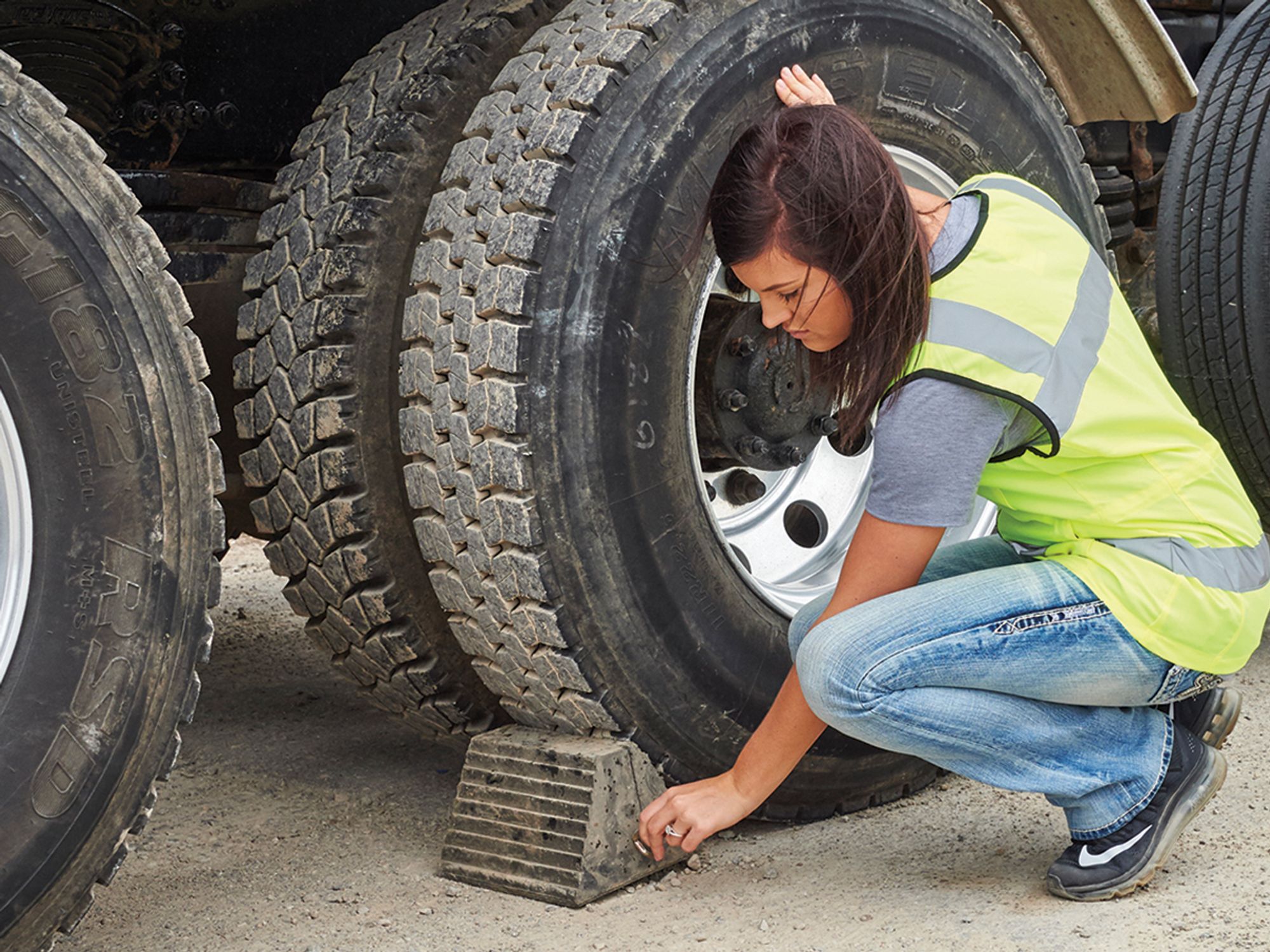Wheel chock requirements

- Though the use of wheel chocks is recommended, FMCSA does not require wheel chocks in most cases because a CMV’s parking brakes are supposed to be able to hold the vehicle in place.
- OSHA requires that there be a means in place, such as wheel chocks or sand shoes, to prevent transport vehicles from moving while dockboards are used.
Wheel chocks are typically placed against the wheels of commercial trailers at loading docks. At times, they are required by either the Federal Motor Carrier Safety Administration (FMCSA) or the Occupational Safety and Health Administration (OSHA). Chocks are also recommended when drivers or other personnel are working around or on a commercial motor vehicle (CMV), such as to perform an inspection or perform maintenance, when vehicle movement could cause injuries or death.
FMCSA requirements
The FMCSA’s parking-brake standard requires that every CMV be equipped with a parking-brake system that can hold the vehicle or combination in place under any condition of loading. For this reason, wheel chocks are not required on most CMVs, with the exception of agricultural-commodity, heavy-hauler, and pulpwood trailers. These types of vehicles must be equipped with enough wheel chocks to prevent movement, but the regulations do not specify how or when to use them or how many to use.
OSHA requirements
OSHA has stated that relying only on the FMCSA’s brake regulations may not prevent transport vehicles from moving while dockboards are being used. OSHA contends that it has authority to enforce chocking requirements over:
- Transport vehicles that do not meet the CMV definition (such as those not operating on a “highway”); and
- CMVs not operated in interstate commerce.
OSHA requires that there be a means in place, such as wheel chocks or sand shoes, to prevent transport vehicles from moving while dockboards are used. Movement of a transport vehicle while it is being loaded or unloaded can lead to crushing or fall injuries.
Finally, note that motor carriers and shippers or receivers can mandate the use of wheel chocks even when not specifically required by regulation.
